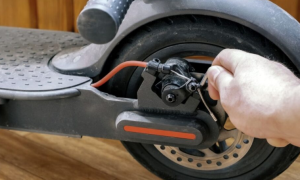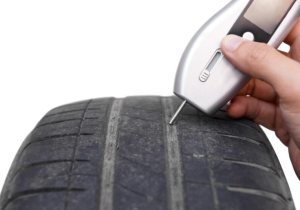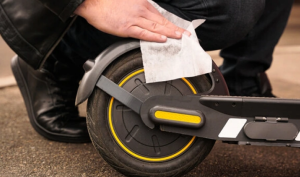Electric scooters should be serviced every 500 miles or every six months, whichever comes first.
Introduction to Electric Scooter Maintenance
Importance of Regular Service
Regular service is crucial for maintaining the performance and extending the lifespan of an electric scooter. Studies show that scooters serviced regularly can have a lifespan up to 30% longer than those neglected. Regular maintenance ensures the scooter operates at optimal efficiency, reducing the likelihood of breakdowns. A well-maintained electric scooter battery can retain up to 80% of its capacity after 500 charge cycles, compared to only 50% for poorly maintained ones.
Overview of Common Electric Scooter Components Electric scooters consist of several key components, each playing a vital role in its operation. The motor, typically ranging from 250 to 500 watts, is the heart of the scooter, providing the necessary power. The battery, often a lithium-ion type, is another crucial component, determining the scooter’s range and speed. A standard electric scooter battery lasts for about 2-3 years or 500-1000 charge cycles. Other components include the controller, which regulates power flow, brakes for safety, and tires that affect the ride quality. Proper maintenance of these components is essential for maximizing the scooter’s performance and safety.
Service Intervals
Recommended Maintenance Schedule
Maintaining an electric scooter involves adhering to a specific maintenance schedule. Experts recommend a thorough check-up every 500 miles or six months, whichever comes first. This schedule should include inspecting the battery, which is pivotal for maintaining optimal performance and efficiency. Battery checks are crucial as the lifespan of a lithium-ion battery is typically 2-3 years. Tire inspections are also vital; a tire’s average lifespan is about 1,000 miles, depending on usage and road conditions. Regular lubrication of moving parts, such as bearings and hinges, every 200 miles prevents premature wear and tear, directly impacting the scooter’s durability and ride quality.
Signs Your Electric Scooter Needs Servicing
Several indicators suggest that an electric scooter needs servicing. A noticeable reduction in range or speed indicates potential battery issues. If the scooter was once capable of traveling 20 miles on a full charge but now struggles to reach 15 miles, it’s a clear sign the battery may need attention. Unusual noises from the motor or wheels can signal mechanical problems, requiring immediate inspection. Difficulty in acceleration or inefficient braking also points towards the need for servicing. Regular maintenance not only enhances the safety and performance of the scooter but also plays a significant role in minimizing long-term costs associated with major repairs or parts replacement.
Battery Care and Maintenance
Maximizing Battery Life
To maximize the life of an electric scooter’s battery, it’s essential to follow specific care guidelines. Keeping the battery charged between 20% and 80% is recommended to optimize its lifespan. Overcharging or draining the battery completely can significantly reduce its capacity. A battery consistently charged to 100% can lose up to 20% of its capacity in one year, compared to just 8% when charged within the recommended range.
Temperature also plays a crucial role. Storing the scooter in a cool, dry place, ideally between 20°C and 25°C (68°F – 77°F), prolongs battery health. Exposing the battery to temperatures above 30°C (86°F) can decrease its lifespan by up to 15% annually. Regular use is beneficial; a scooter left unused for extended periods can experience 5-10% capacity reduction per month.
Safety Tips for Battery Handling
Handling an electric scooter’s battery safely is paramount to prevent accidents and ensure longevity. It’s essential to use only the manufacturer-provided charger to avoid damaging the battery. In case of any damage or deformity to the battery, it should be replaced immediately, as damaged batteries pose significant safety risks.
Avoid exposing the battery to water or moisture, as this can lead to short circuits. When cleaning the scooter, it’s advisable to remove the battery or ensure it’s properly covered. If the scooter will not be used for an extended period, the battery should be stored at a 50% charge state to maintain its health.
| Aspect | Best Practice | Impact on Battery Life |
|---|---|---|
| Charging Range | Keep between 20% – 80% | Extends lifespan, prevents capacity reduction |
| Charging Frequency | Regular charging, avoid complete discharge | Maintains optimal performance |
| Temperature Exposure | Store in 20°C – 25°C (68°F – 77°F) | High temperatures can decrease lifespan |
| Storage for Extended Periods | Store at 50% charge state | Prevents capacity reduction |
| Charger Use | Use manufacturer-provided charger only | Prevents damage and ensures safety |
| Water Exposure | Avoid exposing the battery to water | Prevents short circuits and potential hazards |
| Physical Damage | Replace if damaged or deformed | Damaged batteries can be unsafe |
Following these guidelines ensures the efficiency, safety, and longevity of the electric scooter’s battery, contributing to a better overall riding experience and cost-effectiveness in the long run.
Tire Maintenance
Checking and Replacing Tires
Regular inspection of electric scooter tires is essential for safe and efficient operation. It is advisable to check tires for wear and tear before each ride. A tire’s tread depth significantly impacts grip and stability; a worn tire with shallow treads increases the risk of accidents, especially on wet or slippery surfaces. For optimal safety, replace tires when the tread depth falls below 1.6mm, which is the legal minimum in many countries.
Tires also need to be checked for punctures or damages. A tire with even a small puncture can lead to a gradual loss of air, affecting the scooter’s handling and increasing the risk of a blowout. Regular riders should consider replacing tires every 6 to 12 months, depending on usage and road conditions. High-quality tires can last up to 2000 miles, whereas budget options might need replacement after 1000 miles.
Importance of Tire Pressure
Maintaining the correct tire pressure is crucial for the performance and longevity of electric scooter tires. Properly inflated tires reduce rolling resistance, enhancing the scooter’s efficiency and speed. Under-inflated tires can decrease range by up to 10%, as more energy is required to maintain speed. The recommended tire pressure for most electric scooters is between 40 to 60 PSI, depending on the model and tire size.
Correct tire pressure also plays a significant role in rider safety. Over-inflated tires can lead to a harsh ride and decreased traction, while under-inflated tires may cause poor handling and increased wear. Checking tire pressure every two weeks is recommended to ensure optimal performance and safety.
By adhering to these tire maintenance practices, riders can significantly enhance their electric scooter’s riding experience, safety, and cost-efficiency. Regular tire care not only improves the ride quality but also contributes to the overall longevity of the scooter.
Cleaning and Storage
Proper Cleaning Techniques Effective cleaning of an electric scooter is crucial for maintaining its appearance and functionality. Avoid using high-pressure water jets as they can force water into electrical components, leading to potential damage. Instead, use a damp cloth and mild detergent for cleaning the frame and non-electrical parts. For electrical components, such as the display and battery compartment, use a dry cloth to wipe away dust and debris.
It’s important to clean the scooter regularly, especially after riding in muddy or dusty conditions, to prevent build-up that can impair performance. For instance, dirt accumulation in the wheel bearings or on brake pads can reduce efficiency and increase wear. A well-maintained scooter not only operates better but can also have a longer lifespan, with fewer repairs needed over time.
Tips for Long-term Storage When storing an electric scooter for an extended period, certain measures should be taken to ensure its longevity. Store the scooter in a cool, dry place to prevent battery degradation and rust formation. The ideal storage temperature is between 10°C and 20°C (50°F – 68°F). Batteries should be charged to about 40% to 60% before storage, as both full and low charges can lead to reduced battery life.
If the scooter will be stored for more than a few months, it’s advisable to check the battery charge every 30 days and maintain it within the recommended range. Covering the scooter with a breathable cover will protect it from dust and moisture. Lifting the scooter off the ground can prevent tire deformation, especially for longer storage periods.
By following these cleaning and storage guidelines, the electric scooter remains in optimal condition, ready for use when needed. This approach not only enhances the efficiency and performance of the scooter but also contributes to cost savings by reducing the need for repairs and replacements.



